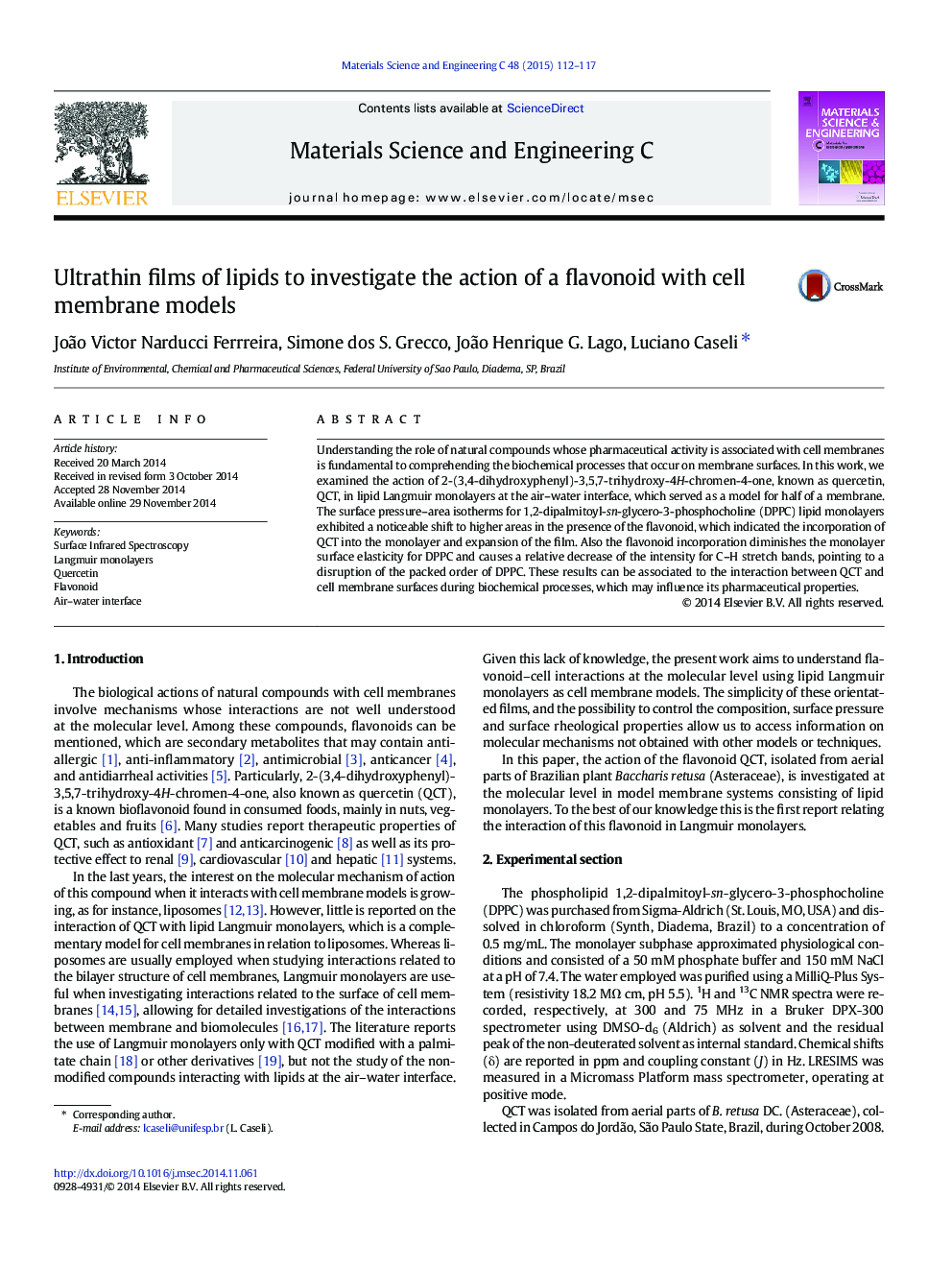| Article ID | Journal | Published Year | Pages | File Type |
|---|---|---|---|---|
| 1428439 | Materials Science and Engineering: C | 2015 | 6 Pages |
•Biomembranes are mimicked with Langmuir monolayers.•A flavonoid is incorporated to the monolayer.•Interactions at the molecular level are identified with tensiometry and PM-IRRAS.•Intermolecular interactions are identified and related to biological activity.
Understanding the role of natural compounds whose pharmaceutical activity is associated with cell membranes is fundamental to comprehending the biochemical processes that occur on membrane surfaces. In this work, we examined the action of 2-(3,4-dihydroxyphenyl)-3,5,7-trihydroxy-4H-chromen-4-one, known as quercetin, QCT, in lipid Langmuir monolayers at the air–water interface, which served as a model for half of a membrane. The surface pressure–area isotherms for 1,2-dipalmitoyl-sn-glycero-3-phosphocholine (DPPC) lipid monolayers exhibited a noticeable shift to higher areas in the presence of the flavonoid, which indicated the incorporation of QCT into the monolayer and expansion of the film. Also the flavonoid incorporation diminishes the monolayer surface elasticity for DPPC and causes a relative decrease of the intensity for C–H stretch bands, pointing to a disruption of the packed order of DPPC. These results can be associated to the interaction between QCT and cell membrane surfaces during biochemical processes, which may influence its pharmaceutical properties.
Graphical abstractFigure optionsDownload full-size imageDownload as PowerPoint slide
